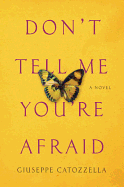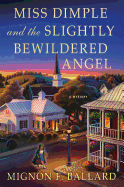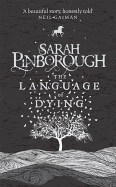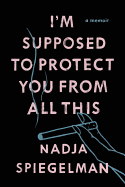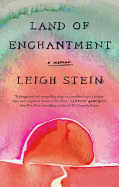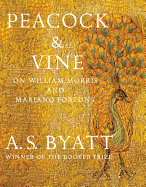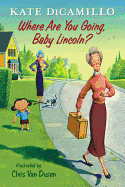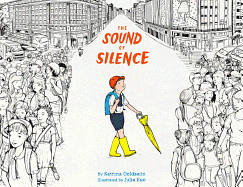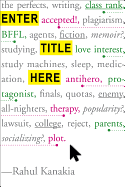_Jessica_Dean_color.jpg) |
| photo: Jessica Dean |
In a career spanning more than four decades at many high-profile magazines, Terry McDonell edited and befriended an array of literary giants, including Ernest Hemingway, Hunter S. Thompson, George Plimpton, Jim Harrison, Richard Price and Kurt Vonnegut. McDonell's beautifully written memoir, The Accidental Life: An Editor's Notes on Writing and Writers (Knopf), offers insights on creating and sustaining an editing career while offering sharply observed portraits of the literary lions with whom he worked and partied. Our review is below.
Why do you call the book The Accidental Life?
It's from my first editor, Bob Sherrill, who explained himself as the itinerant editor he was by talking about "the accidental life," which he defined as "letting life happen to you, regardless of the pain and so on but with its soaring joy." This was the opposite of the careers of most editors, who followed straighter paths "as lost to history as any hamster on a wheel." I didn't want that, but I was far from imagining I would ever become what I thought of as a real editor, like Sherrill, let alone edit his hallowed Esquire, where he had worked in the 1960s. But that's what happened, and I met new writers and worked with them and kept moving. My life seemed normal except that it was very different every day, which I knew was what Sherrill loved most about his editing life. His "accidental life." Sometimes ideas got broken, jobs didn't work out, friends faded, but the thing was, no matter how rocky it got, there was always redemption in the work. That was not accidental. Editing and writing filled my days and nights. It was a way to live. That's what I wanted to write about.
Why was editing P.J. O'Rourke "joyous?"
Our joke was that all we really did was not work, but maybe we were working from the inside out, like happy anthropologists comparing field notes. We had another joke about deadlines being our friends, and P.J. always met his with clean copy. He was a tight grammarian; the structural rules governing composition reflected his improbable love of logic. Copy editors loved him. And everything we tried somehow worked.
What's your favorite O'Rourke quote?
Before the Internet, I kept a file of his quotes. I used short ones to spice my letters and sent long ones to writers who seemed blocked, as unsubtle suggestions to take some chances. As P.J. liked to put it, "Safety has no place anywhere." As an editor, that was my favorite, but as a reader I was always tickled by one from 1994: "Some people say a front-engine car handles best. Some people say a rear-engine car handles best. I say a rented car handles best." I include a run of P.J. quotes in the book.
You edited four magazines under Jann Wenner; in your book you capture his many sides--the best and the worst.
I never knew anyone to bring out as much bad feeling and envy as quickly as Jann. People said they hated him because he was a bully and wouldn't listen. But they loved him, too, and if you worked with him on ideas, you knew how smart he was, and that went a long way. His passion, too, was obvious and moving, and made him vulnerable.
 You worked at 13 magazines over the years. What are your best memories of working at Rolling Stone?
You worked at 13 magazines over the years. What are your best memories of working at Rolling Stone?
It was New York in the early 1980s, a wild time and I had access to everything. I got to publish writers--like Richard Price, Scott Spencer, and Jayne Ann Philips--who were important before we knew they were. There's a lot about all that in the book.
...at Newsweek?
I learned that you can turn on the proverbial dime. "Scrambling the jets" is what Maynard Parker, Newsweek's editor, called it, reveling in the cliché, and it was thrilling and important at the same time. In the beginning this required nerve. Later on it became second nature. I had only three rules: Force nothing. Be clear. You can always go deeper.
...at Esquire?
I loved all the work and every editing job I ever had, but when I was editor-in-chief of Esquire, it felt like the best job I was ever going to have. Maybe it was. That's where I first got to publish many of the writers I came to admire most, like Richard Ben Cramer and Richard Ford, to name only two.
...at Sports Illustrated?
I was there 10 years, longer than anywhere else. At first I loved the high-end narrative journalism--classic SI "Bonus" pieces designed to push writers by giving them time to report and space to run long. They didn't just cover the event, or even distill it with analysis; they blew it through as many filters as they could find, using sport as a prism to view a much wider experience--courage, loyalty and sacrifice within the context of race, gender and basic fairness. Some of those pieces owned an almost mystical ventriloquism when it came to defining sports as a reflection of American values.
Later, all the digital development was thrilling to me in a different way, which I write about in several chapters.
Which of the writers you worked with required the least editing?
Tom McGuane's uncanny language, his surprising specifics, made me a better editor just by reading his sentences. He was also immaculate, and so too was every sentence I ever got from Gay Talese. It was always that way with the best writers. If you could match them up with the right idea, all you had to do was hook paragraphs; and I tried for a hands-off policy and wrote thank-you notes suggesting that I was there only to get thorns out of paws.
George Plimpton could be irascible as both a writer and an editor, a tough edit on either side of the desk. As an editor, he was unbending. But he also liked to warn fellow writers of the "tin-eared butchery" they might suffer at the hands of magazine editors other than himself. It was a reflection of how much he cared about every word. His great friend Peter Matthiessen was like that, too, although he seldom edited anyone but himself.
Jim Salter's great confidence had a rightness about it that left him seemingly without vanity. And he was open to suggestions once he trusted you. Hunter Thompson had a similar confidence, but devoured editing suggestions until he was satisfied--with sometimes many revisions. "Let the big dog eat," he'd say.
Jim Harrison did little revising and was proud of it, insisting that he always thought things through before he wrote anything down, and why should he let editors fool with his choices? Editors were not, as he had explained to me when we first met, writers. I learned to tread lightly or risk being told, as I once was by him, "You lynched my baby."
Why do you think so many writers and editors end their lives in suicide?
I have only known one well and that was Hunter Thompson, and I don't have a satisfactory answer. Hunter always said he never expected to live to 50, but he was 67 and reports said he'd been depressed by advancing age, chronic medical problems and the end of football season--the banality of the latter still rings in my head. All I know for sure is that missing him is no consolation.
Ernest Hemingway accepted less money to write nonfiction for Esquire but you say that as an editor, you usually paid twice as much for nonfiction pieces. Why?
The economics of writing have never been stable, and I was editing in a different market. Journalism as Hemingway was referring to it was greatly undervalued compared to fiction. The New Journalism changed that and from the '60s to the late '90s, it wasn't crazy to think you could make a sustainable living as a freelancer. But that changed with the rise of the Internet and the crash of traditional print economics, when word rates dropped at established magazines like rocks in draining ponds. Paying $3 and $4 a word used to be no problem. Now, a dollar a word makes most writers very happy. When Condé Nast mounted the last of the extravagant magazine launches with the $120 million Portfolio start-up in 2007, Mark Golin, a colleague of mine at Time Inc., explained the writer economics as "like when dogs find a tipped-over dumpster behind the Whole Foods." --Kevin Howell, independent reviewer and marketing consultant
Terry McDonell: Editing and Befriending Great Writers
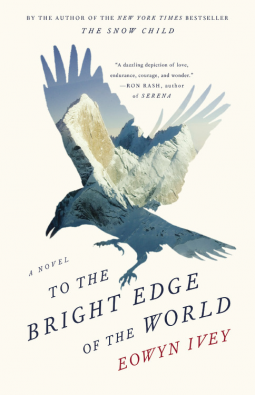 Alaskan author Eowyn Ivey reintroduces the fictional Wolverine River Valley of her debut, The Snow Child, in To the Bright Edge of the World. Instead of isolated homesteaders of the 1920s, this novel follows the adventure of an 1885 expedition into uncharted Alaskan Territory. What the novels share are vivid depictions of the natural elements' harsh brutality and a mystical, folkloric component.
Alaskan author Eowyn Ivey reintroduces the fictional Wolverine River Valley of her debut, The Snow Child, in To the Bright Edge of the World. Instead of isolated homesteaders of the 1920s, this novel follows the adventure of an 1885 expedition into uncharted Alaskan Territory. What the novels share are vivid depictions of the natural elements' harsh brutality and a mystical, folkloric component.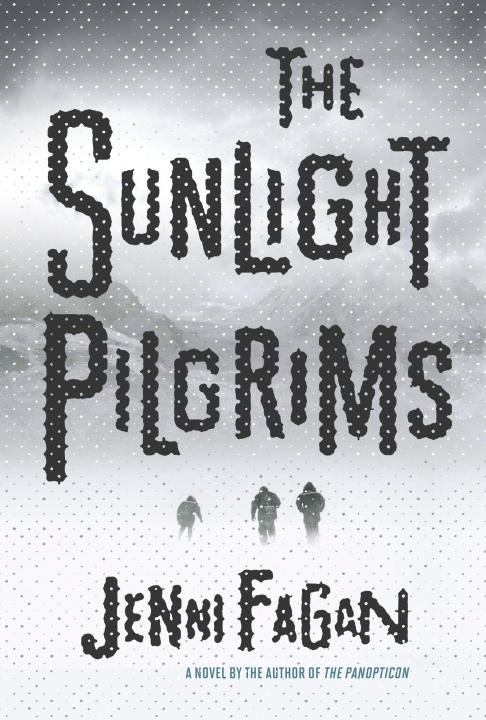 The Sunlight Pilgrims, the second novel by Jenni Fagan (The Panopticon), opens in November 2020, as temperatures around the world are plummeting to record lows. Dylan's mother has just died, and the family business is being reclaimed by the bank. Left with nothing but his grief, Dylan heads north to settle into a small trailer he's inherited in Scotland and try to make sense of his life. There, he meets Stella, the 12-year-old transgender girl next door, and Constance, her mother. Their warmth and humanity stand out in stark contrast to the barren, cold landscape of the Scottish Highlands and the impending winter.
The Sunlight Pilgrims, the second novel by Jenni Fagan (The Panopticon), opens in November 2020, as temperatures around the world are plummeting to record lows. Dylan's mother has just died, and the family business is being reclaimed by the bank. Left with nothing but his grief, Dylan heads north to settle into a small trailer he's inherited in Scotland and try to make sense of his life. There, he meets Stella, the 12-year-old transgender girl next door, and Constance, her mother. Their warmth and humanity stand out in stark contrast to the barren, cold landscape of the Scottish Highlands and the impending winter. In The Lighthouse Road, novelist Peter Geye introduced the Norwegian immigrant Eide family living in Minnesota's Lake Superior town of Gunflint. Wintering continues the saga of the Eides' next generation, beginning as the elder, dementia-stricken Harry Eide wanders off into the wilderness. Prompted by Harry's disappearance, his middle-aged son, Gus, thinks back to the winter when he was 18 and joined his father on a long canoe trek to the same Canada/Minnesota borderlands of the Laurentian Divide. Wintering neatly balances a father-and-son story of wilderness survival with that of a small town's historical secrets and intrigue.
In The Lighthouse Road, novelist Peter Geye introduced the Norwegian immigrant Eide family living in Minnesota's Lake Superior town of Gunflint. Wintering continues the saga of the Eides' next generation, beginning as the elder, dementia-stricken Harry Eide wanders off into the wilderness. Prompted by Harry's disappearance, his middle-aged son, Gus, thinks back to the winter when he was 18 and joined his father on a long canoe trek to the same Canada/Minnesota borderlands of the Laurentian Divide. Wintering neatly balances a father-and-son story of wilderness survival with that of a small town's historical secrets and intrigue.


_Jessica_Dean_color.jpg)
 You worked at 13 magazines over the years. What are your best memories of working at Rolling Stone?
You worked at 13 magazines over the years. What are your best memories of working at Rolling Stone?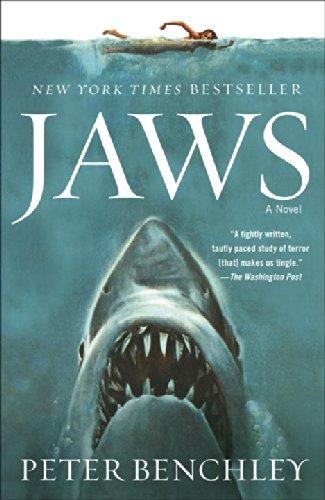 It's the high tide of beach reading season, and there's no better way to appreciate terra firma between your toes than by sinking your teeth into Jaws, Peter Benchley's classic scary shark story and the basis for Steven Spielberg's 1975 blockbuster film. Benchley's book was inspired by a lifelong fascination with sharks. He was first drawn to them during childhood fishing trips with his father off Nantucket, and again as an adult after reading the story of fisherman Frank Mundus, who caught a 4,550-pound Great White off Long Island in 1964.
It's the high tide of beach reading season, and there's no better way to appreciate terra firma between your toes than by sinking your teeth into Jaws, Peter Benchley's classic scary shark story and the basis for Steven Spielberg's 1975 blockbuster film. Benchley's book was inspired by a lifelong fascination with sharks. He was first drawn to them during childhood fishing trips with his father off Nantucket, and again as an adult after reading the story of fisherman Frank Mundus, who caught a 4,550-pound Great White off Long Island in 1964.
